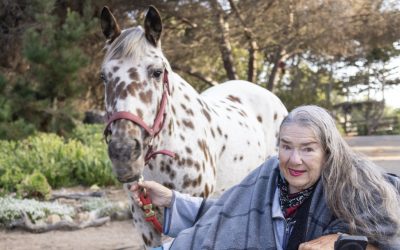The date: September 9, 1850
The event: You live in a settlement now officially within the 31st state of the Union.
The dilemma: You need to create a municipal framework in order for the community to establish itself as a political entity under the new governance.
The response: little
With the admission of California into the Union, San Luis Obispo County was recognized as one of the original 27 in the state. Today, there are 58. As the County Seat of Justice and with the largest concentration of residents, there needed to be a municipal development to complement that of the county. The predicament was one that witnessed a quarter century to begin establishing the modern city as both time and the shifting population required attention to different laws. Today, from these initial attempts, the result is a Municipal Code that provides a ponderous maze of regulations.
While limited state attention was directed to the county, the community of the same name received even less until February 19, 1856 when the solons in Sacramento declared the small hamlet a “town.” With official legislative recognition, local governance was required, especially to pay for local bills. There are few surviving documents until 20 years later when there were enough residents (at least 3000) to declare it a city.
It is from this pioneer effort to frame a local civic governance in concert with state and federal guidelines that some clues are provided as to both the character of the residents and the quality of their lives some 170 years ago. Traces of the efforts remain today.
Here’s the story. There were no laws. In fact, there were few people to regulate. The official 1850 Federal Census (taken in February 1851) numbered 336 in the entire 3600 square mile county. There were more but any census taker knew it was much too dangerous to wander around looking for anyone to count. Violent crime was a familiar reality. Safety, not statistics, was a commonsense answer.
Fortunately, there are some clues as to what the few residents considered important enough to memorialize into laws. Looking back, if the initial attention to organizing a municipal life seems lax, it may have been that there was a county governance in the same geographic location sufficient to address any local issue. Why waste time and effort?
The earliest records for the nascent hamlet indicate nine ordinances—Series I—were passed in February 1858 and have been previously detailed on these pages in 2006. To recap, the only record of the laws are their titles that also describe much of the contents of the ordinances: regular meetings, bonds for officers, publication of ordinances (two versions), fines, cleaning of streets, and the poll tax (two days yearly devoted to streets and alleys or $3). There was an ordinance on “Unruly Conduct,” but also another regulating behavior … not of the two-legged variety but of the four-legged kind … especially dogs. Among the first nine ordinances—Number 4—involving the behavior of dogs seems a bit frivolous
After all, man’s best friend was unlikely to pose a municipal threat. Yet, the pioneers considered the canine worthy of regulation. For them, the major concern was health and safety. Unruly humans could be fined, jailed or shot. There was a similar procedure for any four-legged menace. Most any offender had few rights, and there were none for the latter. While the ordinance was directed toward dogs, any wandering animal would qualify for official attention.
The Marshal, the sole Town employee, was charged with any municipal strictures for the animals and the duty became part of his income. He had other duties but his income was not by contract, but by assignment. If he served a legal document, for instance, his fee was one dollar. While moving historically from a local law enforcement agent to a county source, the Sheriff today is responsible for dogs as part of the politely named Animal Services Department. Even an animal pound has survived through time although by the gentler name of “shelter.”
Undoubtedly influencing the ordinance was the dreaded dog bite. Rabies was fatal. There were no ways to limit the canine population, and thus the Marshal was charged with attending to the quadrupeds. There was even one of the earliest forms of personal identification–a dog tag–developed to track anyone found wandering the dirt streets. It is not until 1873 that a specific ordinance survives to detail the procedures for dogs. Undoubtedly, much of its contents repeated earlier versions. Passed on October 31, the rules of Ordinance 11 were simple:
- Any unattended animal found not “duly registered” became the Marshal’s property.
- The fee to register an animal was $2.50 annually. Later, in a decision sure to cause grave consternation today, female dogs (our civic ancestors used the correct term) were charged more.
- Each registrant was issued a “metallic plate” indicating a number and date of issue. The Marshal maintained a ledger of the owner and a description of the animal.
- “Redeeming” the inmate—bail—was set at $2.50. While the Marshal was entitled to 25% of the registration fee, he kept all the bail amount.
- If no one claimed the canine within 48 hours, the Marshal then could sell it or shoot it.
Today’s pets bear little resemblance to the canines of the pioneer community. Most were useful members of a workforce as are some today. A police dog is not one to inform any lawbreaker of his or her rights! Thus, roaming animals either had a job or were at best a community burden. Undoubtedly influencing the ordinance was the dreaded dog bite. In the community’s pioneer years, the terrifying rabies was years from Pasteur’s breakthrough treatment in the mid-1880s and still causes thousands of deaths yearly worldwide. There were no ways to limit the canine population, and thus, the Marshal was charged with attending to any errant animal through extreme measures.
Today, few experience any anxiety as to the family pet transmitting rabies. Wild animals may carry them but properly caring for pets includes vaccination and prevention of rabies. Not so for those from yesteryear. Among the community nightmares, a roaming dog was cause for fear. Death came with relentless vigor to the population…especially children who survived birth. Any birthday was also an acknowledgment of survival as, too often, there would not be another. It is from laws of the distant past that much insight is gained into the daily existence of our civic ancestors.





